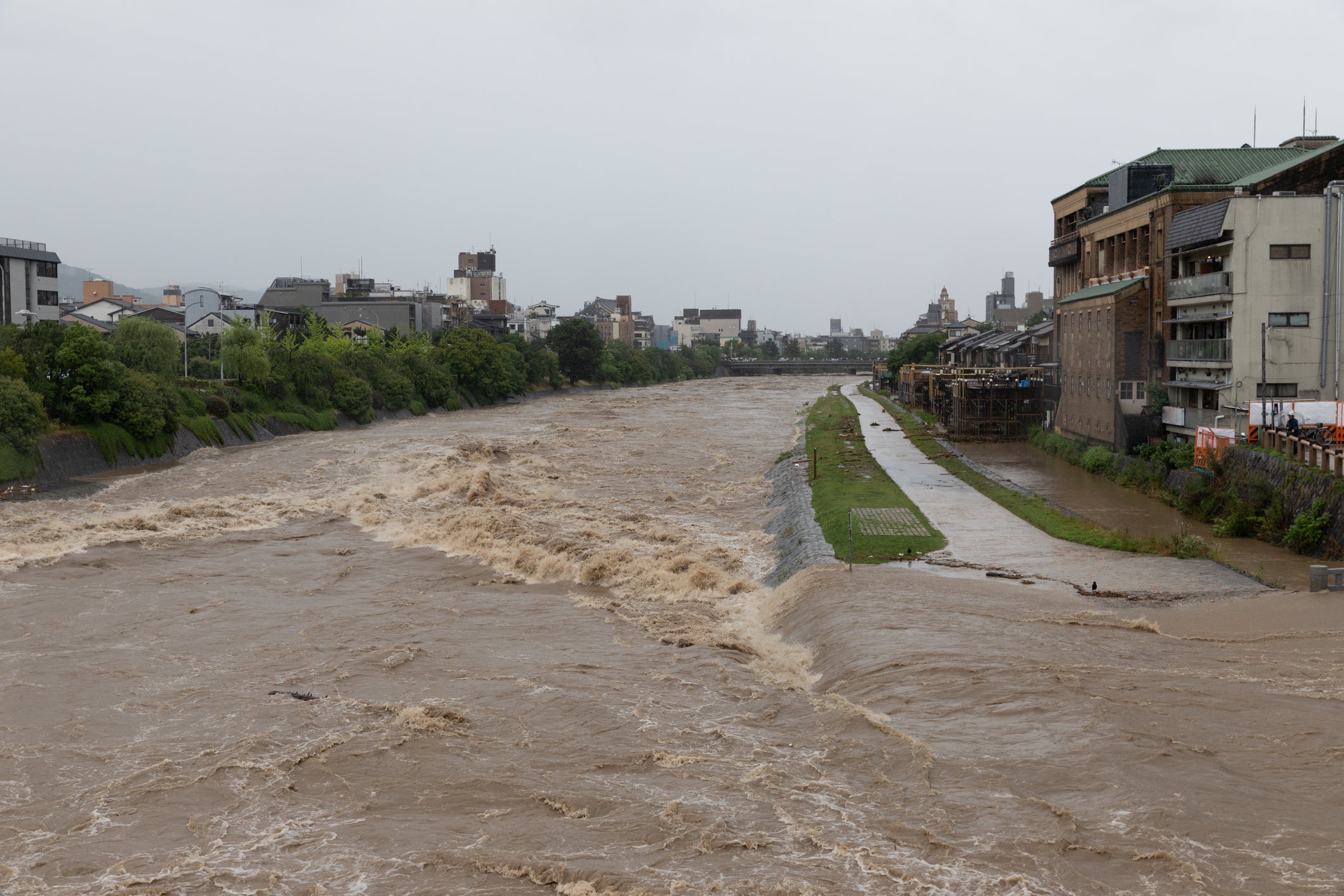Challenges and solutions for disaster prevention measures in urban areas
table of contents
Introduction
Issue 1: Lack of evacuation sites due to urban overcrowding
Solution for issue 1
Challenge 2: Vulnerability of aging infrastructure
Solution for issue 2
Challenge 3: Difficulty in communicating information
Solution for issue 3
Challenge 4: Various risks and countermeasures
summary
Introduction
Disaster prevention measures in urban areas are extremely important due to factors such as population concentration and dense infrastructure. Disaster prevention measures in urban areas require continuous improvement in order to prepare for natural disasters such as earthquakes, floods, and typhoons, as well as man-made disasters such as fires and terrorist attacks. This article details the challenges of disaster prevention in urban areas and solutions to them.
Issue 1: Lack of evacuation sites due to urban overcrowding
1. Increase in population density
In urban areas, many people are concentrated, and a large number of people are concentrated on a limited land area. This results in a rapid increase in the number of people seeking refuge during disasters, and a high demand for evacuation sites.
2. Inappropriate evacuation site placement
Land use is diversifying in urban areas, limiting the availability of sufficient space for shelters and evacuation facilities. In addition, if the evacuation site is inappropriately located, it will be difficult to evacuate to the appropriate location or access the evacuation site.
3. Lack of scale and equipment of evacuation site
Urban areas may lack appropriately sized and equipped shelters. Lack of sufficient space and necessary resources such as bedding, food and water facilities can compromise the quality and safety of evacuation living.
4.Multipurpose use of evacuation areas
In urban areas, there are limited facilities that can be used as evacuation shelters, so it is common for public facilities such as schools, parks, and sports facilities to double as evacuation shelters. However, as a result, in the event of a disaster, the original purpose of use of the facility and the function of the evacuation center conflict, creating a situation where it is difficult to balance the two.
Solution to problem 1
1. Expansion and diversification of evacuation sites
Utilize existing facilities : Use existing buildings and facilities such as public facilities, schools, gymnasiums, parks, and cultural facilities as evacuation sites. This will increase the number of evacuation sites and eliminate the shortage of evacuation facilities.
Setting up temporary evacuation shelters : In the event of a disaster, it is also effective to set up temporary evacuation shelters. We will use large-scale tents and temporary facilities to prepare necessary equipment and supplies.
2. Arrangement of functional evacuation areas
Arrangement according to regional characteristics : Since urban areas consist of multiple regions and geographical conditions, it is important to arrange evacuation sites according to regional characteristics. We will formulate an appropriate evacuation site layout plan, such as installing earthquake-resistant facilities in areas with high earthquake risk and evacuation sites to high places in areas with high flood risk.
Securing an evacuation route : It is also important to secure an access route to the evacuation site. We will improve evacuation routes by improving and widening roads and bridges, and creating sidewalks and bicycle paths.
3.Improve the capacity and improve the facilities of evacuation sites
Increasing capacity : Increase the capacity of your evacuation site by expanding the space, creating sleeping areas, and stocking adequate bedding, food, and water supplies. We will also consider ways to expand capacity by linking multiple evacuation sites in the event of a large-scale disaster.
Providing toilets and sanitary facilities : It is important to properly install toilets, washing facilities, and sanitary facilities within the evacuation area. Ensure proper management and cleaning to maintain sanitary conditions.
4. Dissemination of evacuation plans and information
Formulation and dissemination of evacuation plans : It is important for urban local governments and related organizations to create evacuation plans in the event of a disaster and thoroughly disseminate them to citizens. By communicating evacuation routes, evacuation shelter locations, safety information, etc. in an easy-to-understand manner, we encourage citizens to take appropriate evacuation actions.
Rapid transmission of information : Accurate and rapid transmission of information is necessary during disasters. Local governments and related organizations will develop means of disseminating information in the event of a disaster and provide information to citizens using public broadcasting, SNS , apps, etc.
Challenge 2: Vulnerability of aging infrastructure
1. Aging infrastructure
Infrastructure in urban areas deteriorates over time and due to lack of regular maintenance. Aging infrastructure, such as old roads, bridges, sewers, water pipes, and power grids, is vulnerable to disasters and increases the risk of damage or malfunction.
2. Lack of earthquake resistance
Earthquakes can cause serious damage, especially in urban areas. Aging buildings and structures do not have sufficient earthquake resistance, increasing the risk of collapse or damage in the event of an earthquake. This may result in increased damage to human life and property.
3. Insufficient flood countermeasures
In urban areas, stormwater drainage systems and river management are important. However, due to aging drainage facilities and insufficient dredging of rivers, water cannot be drained sufficiently during floods such as heavy rains or typhoons, increasing the possibility of flood damage.
4. Energy supply risks
Electricity supply is important in urban areas, but aging power grids and substations increase the risk of breakdowns and power outages. In the event of a disaster, power outages can paralyze transportation, medical facilities, housing, and other functions, potentially disrupting daily life and rescue operations.
5.Vulnerabilities in communication and information infrastructure
Prompt information transmission is important in the event of a disaster, but aging communication infrastructure and information systems increase the risk of downtime and communication failures. This may result in delays in disaster information, difficulty in sharing information, and the inability to provide appropriate support to disaster victims.
Solution to issue 2
1. Infrastructure renovation and maintenance
It is important for local governments and related organizations in urban areas to regularly inspect, repair, and maintain their infrastructure. By strengthening earthquake resistance and flood countermeasures and resolving problems early, we can reduce the vulnerability of infrastructure in the event of a disaster.
2.Securing spare equipment
In the event of a disaster, key infrastructure may become unavailable. In urban areas, it is important to have backup power plants, water sources, communications equipment, and other equipment on hand.
Challenge 3: Difficulty in communicating information
In urban areas, the large population can make it difficult to convey information. Accurate and prompt information transmission is necessary in the event of a disaster, but information may be delayed or confused.
Regional diversity : Urban areas have different regions and geographies, each with their own unique risks. For example, coastal areas are at increased risk of tsunamis and sea level rise, and earthquake-prone areas require stronger earthquake resistance. Since it is difficult to create a disaster prevention plan and standardize measures for an entire urban area, it is necessary to develop measures tailored to the characteristics of each region.
Solution to issue 3
1. Establishment of emergency communication means
It is necessary to develop emergency communication means that can transmit information even in the event of a disaster. Consider using mobile phones, radios, disaster prevention administrative radio, etc. to ensure a means of sharing information in the event of a disaster.
2. Utilize SNS and apps
It is effective for local governments in urban areas to utilize SNS and apps for disseminating information during disasters. It can provide quick and accurate information and strengthen collaboration with citizens.
3. Risk assessment and information sharing
It is necessary to conduct risk assessments for each region and share information appropriately based on those assessments. We understand risk factors such as earthquakes, floods, and weather disasters, and provide appropriate information through communication with local residents and related organizations.
4. Measures based on regional characteristics
We develop disaster prevention measures that respond to risks specific to the region, taking into consideration the geology, ground, climate conditions, population structure, etc. of the region. Through cooperation with local residents and related organizations, we will arrange appropriate evacuation sites, secure evacuation routes, and develop plans for communication and relief activities in the event of a disaster.
5.Building a regional cooperation system
It is important for local residents, local governments, related organizations, and companies to work together on disaster prevention measures. We will improve the disaster prevention capabilities of the entire region through the formulation of local disaster prevention plans tailored to local characteristics and needs, training, and building community networks.
Challenge 4: Various risks and countermeasures
1. Earthquake risk
Some urban areas are at high risk of earthquakes, but the nature and probability of earthquakes differ depending on the region. For example, large-scale earthquakes are expected to occur in areas where earthquake zones and fault zones run. In such areas, measures to increase the earthquake resistance of buildings and structures and the formulation of appropriate evacuation plans are required.
2. Flood risk
Urban areas near rivers and coastlines are at increased risk of flooding. The probability and scale of floods vary depending on the amount of rainfall and river characteristics. In areas with high flood risk, it is important to develop appropriate evacuation plans and routes, improve rivers, and strengthen levees.
3.Ground conditions
The ground quality of urban areas influences the risk of earthquakes and flooding. The firmness of the ground and geological conditions vary by region, and play an important role in the earthquake resistance of buildings and the management of groundwater levels. Appropriate building standards and ground improvement measures are required based on the characteristics of the ground.
4.Climatic conditions
Urban areas are exposed to risks due to climatic conditions. Each region has different risks of weather disasters, such as typhoons, heavy rain, high temperatures, and cold temperatures. To deal with this, it is necessary to provide appropriate disaster prevention information, formulate evacuation plans, and take appropriate measures for building insulation and heating and cooling.
5.Population structure and social factors
There are differences in urban areas due to demographic composition and social factors. For example, evacuation and support needs differ in areas with a high proportion of elderly people or economically disadvantaged areas. It is important to develop disaster prevention measures that take into account the demographic structure and social vulnerability of each region.
6.The solution is risk assessment and information sharing
It is necessary to conduct risk assessments for each region and share information appropriately based on those assessments. We understand risk factors such as earthquakes, floods, and weather disasters, and provide appropriate information through communication with local residents and related organizations.
7. Measures based on regional characteristics
We develop disaster prevention measures that respond to risks specific to the region, taking into consideration the geology, ground, climate conditions, population structure, etc. of the region. Through cooperation with local residents and related organizations, we will arrange appropriate evacuation sites, secure evacuation routes, and develop plans for communication and relief activities in the event of a disaster.
8. Building a regional cooperation system
It is important for local residents, local governments, related organizations, and companies to work together on disaster prevention measures. We will improve the disaster prevention capabilities of the entire region through the formulation of local disaster prevention plans tailored to local characteristics and needs, training, and building community networks.
summary
Disaster prevention measures in urban areas face a variety of challenges, including population density, infrastructure fragility, and difficulties in communicating information. However, there are solutions to these challenges, such as expanding evacuation sites, upgrading and maintaining infrastructure, and improving communication channels. Urban local governments and related organizations need to strengthen disaster prevention measures to achieve a safer urban environment through continuous improvement and collaboration with citizens.








